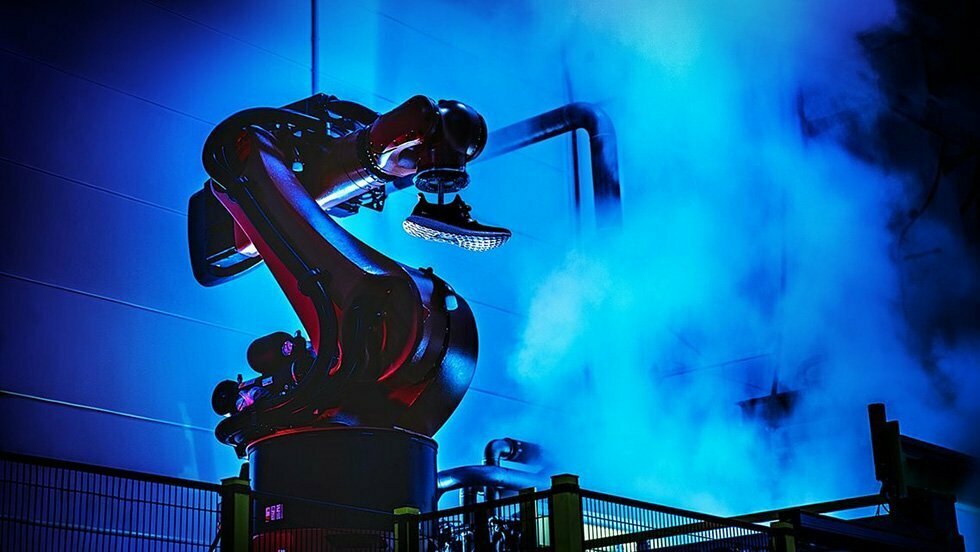Sustainable Manufacturing
Manufacturing has come far when you look at the industry’s history. And today, sustainable manufacturing is a movement that certainly has a bright future. Sustainable manufacturing is the process of creating products, for whatever purpose, through methods that conserve energy and natural resources, whilst being economical and reducing adverse effects on the environment.
In practice, this definition of sustainable manufacturing can take many forms. We touched base with some of our knowledgeable employees to get their thoughts on what sustainable manufacturing means to them and why it’s important.
Expert opinions: Why sustainable manufacturing is important
Daneel Ballaram, Head of Product Design and Digital Manufacturing Services at Baker Baynes, said that conserving energy and natural resources is very welcome in the manufacturing world, for a number of reasons, but particularly when it comes to safety: “I think sustainable manufacturing is great as it enhances employee, community and product safety.”
Sustainable manufacturing goes beyond the production line and helps to prevent pollution and minimise carbon footprints, which ultimately will go some way to sustain our planet. So, while sustainable manufacturing does immediately conserve energy and natural resources, on a wider level, as Daneel says, it keeps us all safe.
In the US, the Environment Protection Agency initiative called E3: Economy – Energy – Environment are already seeing enhanced safety as a result of sustainable manufacturing. In June 2017, they reported the opportunity to reduce:
- Nearly 160 million pounds of air emissions
- Almost 330 million pounds of water pollution
- More than 864 million pounds of solid waste
- Over 2.2 million pounds of hazardous waste
- Over 378 million gallons of water use
Helen van der Schyff, Head of Product Design and Digital Manufacturing Technology at Baker Baynes, has the end customer in mind when it comes to sustainable manufacturing. She comments on how sustainable manufacturing has the ability to extend the product lifecycle by gathering useful information from users and supporting them and servicing the product throughout its lifecycle.
This way of thinking gets consumers, and manufacturers, away from the throwaway culture of cheaply replacing products, to the detriment of our planet, and into the mind set of designing and building quality products that are made to last. And, of course adapting products so they are tailored to individual needs, rather than starting from scratch each time. This approach benefits the planet, and also the customer and manufacturer as products get more sophisticated and personalised.
Best in class examples of sustainable manufacturing
It’s easy to talk about sustainable manufacturing and realise the benefits, but doing it, and doing it innovatively, is another matter. For inspiration, we look at our favourite examples of sustainable manufacturing in the real world:
Adidas
As a global company, which is the second largest sportswear manufacturer in the world, it’s comforting to see that adidas have several initiatives on their radar that promote and execute sustainable manufacturing.
Firstly, there’s DryDye, a technology that eliminates the need for water in the shoe-dyeing process. When you’re manufacturing more than 360 million pairs of shoes a year, that is a big deal.
Secondly, there’s their Manufacturing Excellence Programme, a strategic scheme that looks to optimise how all their products are engineered and manufactured.
Finally, and most significantly, there’s Adidas’ Speedfactory. Located in Germany. Robots are busy making trainers at three times normal speed, and, more impressively, they have the flexibility to churn out personalised trainers, tailored to unique size and fit in one day.
The Senior Innovation Director at Adidas summaries their approach to manufacturing:
“The Future of Manufacturing might be about different materials or product features and functions which we do not consider yet. Just as well it could be about new production technologies and new ways of engaging with our consumers and their needs. We are asking ourselves lots of different questions, such as: How can we be faster and more flexible, and what environmental footprint can we possibly leave?”
Nike
Moving on to Adidas’ competitor, Nike, who are also doing some interesting things in the sustainable manufacturing world.
To name a few initiatives, there’s Nike’s Flyknit technology, which is so accurate with every trainer stitch that it tailors the shoe to every athlete, and more importantly, has reduced nearly 3.5 million pounds of waste – that’s equivalent to the weight of 2.5 million basketballs!
The good news is, Nike want to take this success further. Their aim is to have zero waste from footwear manufacturing sent to landfill or incineration without energy recovery. They want to do this by recycling and regenerating materials into other Nike products like sportswear and even play surfaces like courts and tracks.
BMW
Given the BMW Group has been made the world’s most sustainable automotive company by the Dow Jones Sustainability Index, we couldn’t leave them out. Taking a holistic approach, BMW are not only reducing CO2 emissions, but they are also taking action to support corporate environmental protection, supply chain sustainability and employee education.
They are doing this through their all-electric and hybrid line up of cars, using an impressive 58% of electricity from renewable sources and investing in education and training programmes for their employees. And, these are just some of their initiatives, for more visit the BMW Group.
With all of these best in class examples of sustainable manufacturing, advanced tech design is at the centre – you only need to look at the emerging trends in manufacturing to realise this. Sustainable manufacturing simply isn’t viable without intelligent design technology. And, while the benefits of this kind of design technology is outstanding, the con is that it does require expertise. This is where we come in. Baker Baynes specialise in helping customers adopt technology, purely with the aim of helping a business improve their offering. We’d be happy to help – please get in touch.







0 Comments